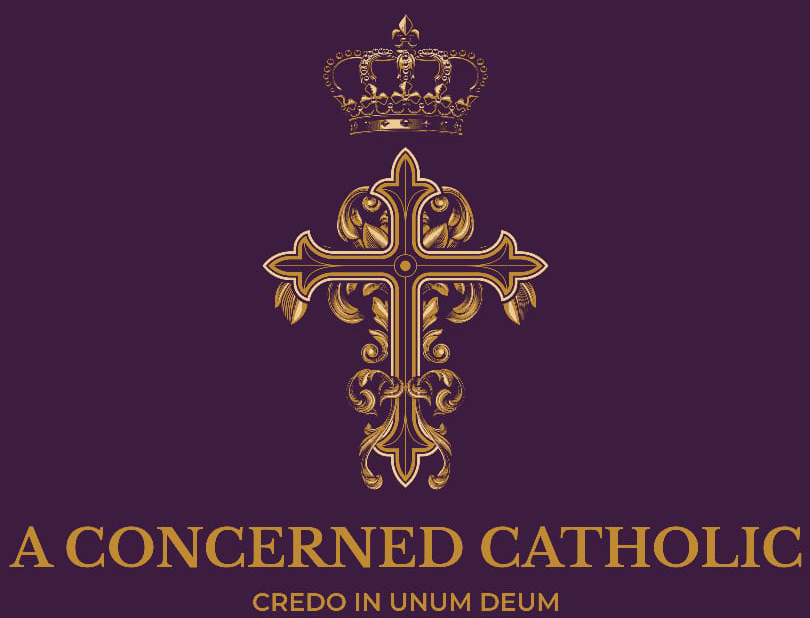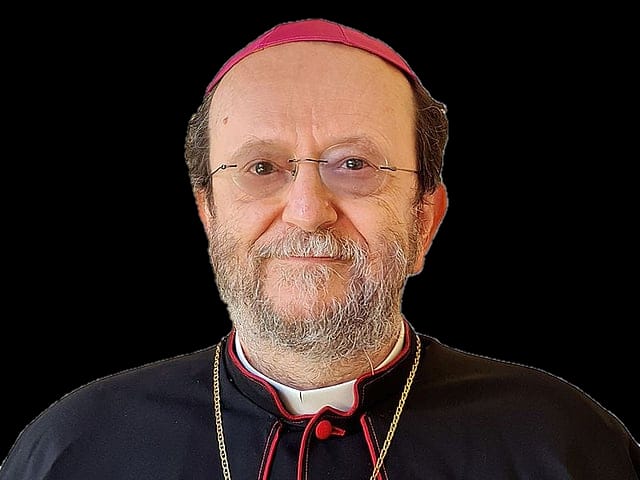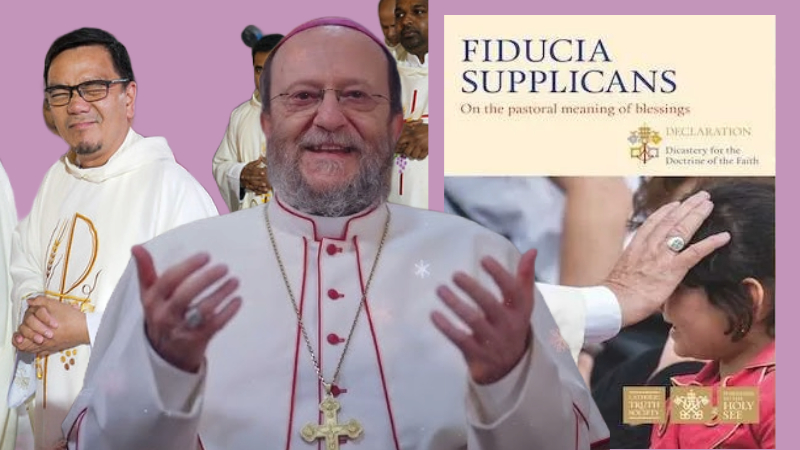Summary: This is a letter to Fr. Anil Rego (Mumbai, India) in light of a homily by him exalting Vatican II; I hope to help more Catholics understand why Vatican II needs serious relooking at.
Background: The sermon in question was delivered by Fr. Anil Rego, parish priest of Good Shepherd Church in Mumbai, India, on 8th June 2025. My email containing the contents of this post (as a letter) was sent first on 18th August 2025 requesting a response by the end of September 2025. A reminder, also containing an additional aspect gleaned, was sent on 10th September 2025 (as an edit). My last email to Fr. Anil at Good Shepherd Parish was dated 01st October 2025 and at the time of posting this, no response to my emails have been provided by Fr. Anil, the parish office or the Bishop’s office who I added to my emails. Please note that minor changes have been made to the original letter.
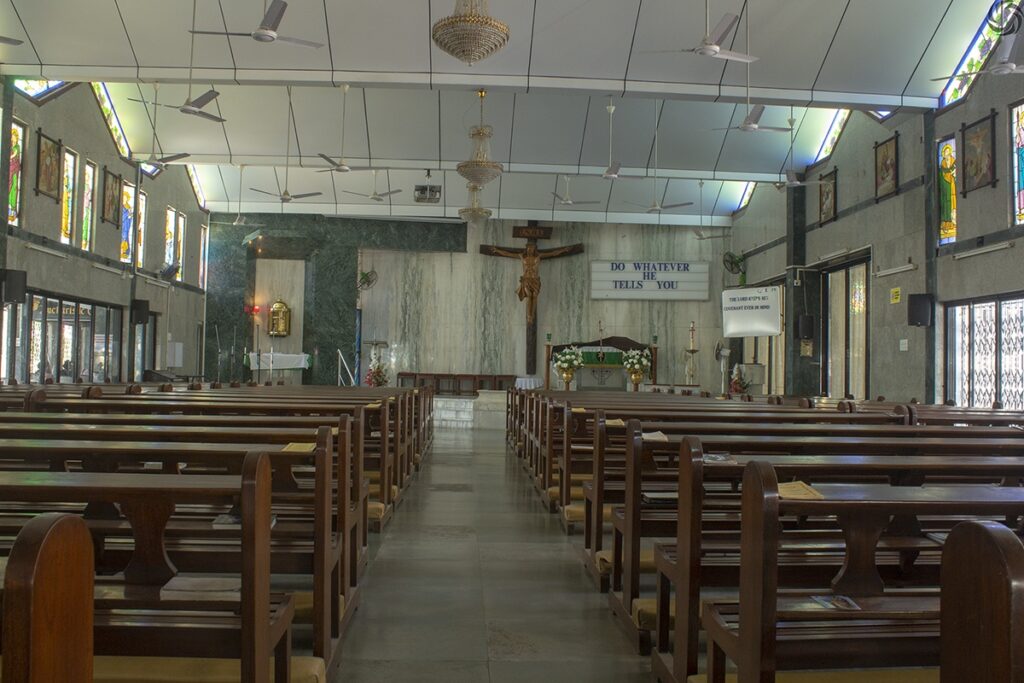
Dear Father Anil,
On the 8th of June 2025 (the feast of Pentecost), during the 5.30 PM Mass at Good Shepherd Church, you delivered a sermon which in my view, was not in accordance with the entirety of Catholicism. I explain why below.
Pope Leo, who you referred to as the first American Pope, during his inaugural address after being elected as Pope stated:
“I would like that our first great desire be for a united church, a sign of unity and communion…”
However, in your sermon, you implied a disdain for such unity. Kindly note the below remarks given during your sermon (paraphrased), as it indicates Catholicism is in a fractured state:
1) You stated that Vatican II was intended to bring the Church into the modern era, citing Pope John XXIII’s call for “an opening of the windows to the world”.
2) According to you, Vatican II changed the mass for good by allowing the mass in the local language so people could understand it. As an example, you cited that people would say the rosary during the Mass and would kneel when the bells were rung. AND according to you, prior to Vatican II, the people did not know what the priest was saying in Latin.
My response will address the above two points. The primary objection I have with your sermon, is due to the perception that it seems to create; one of rupture with the pre conciliar church & liturgy. Your views on pre conciliar Catholicism thus came across as a slap on the face on generations of saints, not to mention reverent and God-fearing priests and nuns, and also lay families who exclusively would have attended the Traditional form of the liturgy.
The impression created during the sermon also stems from an unhealthy ‘attitude’ among the ecclesial authorities imbibed after Vatican II, one which has become an unspoken implicit diktat: Catholics must not question Vatican II. Based on this ‘attitude’, Catholics are being bulldozed into submission through a form of indoctrination & weaponized obedience, which if best described, is against one of the key elements of ‘the spirit of Vatican II itself: Dialogue. These nouvelle Vatican II teachings do not carry the full weight of the Magisterium – that is, infallibly defined ex cathedra dogmas or condemnations. Some would argue that Vatican II carries the weight of the Ordinary Magisterium & therefore constitutes a submission of “will and intellect” to this Ordinary Magisterium. However, such submission of “will and intellect” cannot be severed from the depositum fidei (Magisterial teachings from Popes and Councils that are in union with the entirety of Apostolic teaching and the depositum fidei). Moreover, a submission of “will and intellect” to this Ordinary Magisterium has to be in keeping with orthodoxy, not heterodoxy or every new cultural fad that one fancies.
Why should Catholics question Vatican II?
Lex Orandi, Lex Credendi
The first thing the reformers or ‘the Modernists’ (Referring to the heresy of modernism, condemned by Pope Saint Pius X in 1907 through his encyclical Pascendi Domenici Gregis) of Vatican II did was to change the way (how) Catholics prayed especially in their worship of God. By changing the way God was worshipped in the liturgy, the Lex Orandi has now been severed from the Lex Credendi, thus fracturing what Catholics believed. And the way this was achieved, was to first get rid of the old Latin Mass (The Tridentine Latin Mass) which was the primary form of worship through the centuries, even to Apostolic times.
Depositum Fidei (The Deposit of Faith)
“For the Holy Spirit was not promised to the successors of Peter so that they might, by His revelation, make known some new doctrine, but that, by His assistance, they might religiously guard and faithfully expound the revelation delivered through the Apostles”
The following is my response to the main points (listed above in 1 & 2) in your sermon:
1) Your claim: Modernizing the Church and opening the windows of the Church to the world
“…and be not conformed to this world”
Was the intent of the Vatican II Popes thereby justified in the face of scripture which explicitly warns not to conform to the world? On the 25th of June, the Gospel reading which you read was from Matthew 7:15-20, which concluded with verse 20:
“…Thus you will know them by their fruits”
Pope Benedict XVI, in his final address as Pope had this to say about the ‘fruits’ of Vatican II (emphasis mine):
“This “council of the media” was responsible for “many calamities, so many problems, so much misery…Seminaries closed, convents closed, liturgy trivialised”
This may explain why Pope Benedict XVI in his Motu Proprio titled Summorum Pontificum in 2007 stated this about the older form of the mass (emphasis mine):
…which was promulgated by Blessed John XXIII in 1962 and never abrogated (Article 1)
There were 2 main ways in which the Church opened its windows to the world, viz (1) Liturgical reform, & (2) Religious Liberty, Ecumenism.
Liturgical changes
1. Many liturgical gestures, genuflections, & prayers, in the newer form of the mass were stripped away.
2. Irreverent practices, such as that of the Eucharist being received in the hand, as against by kneeling and receiving the Eucharist on the tongue (in the older form of the Mass), were introduced.
3. The liturgical changes recorded in the document Sacrosanctum Consilium required that Latin along with Gregorian Chant would have the “pride of place” in the liturgy (section 36.1 & 116), which was deviously bypassed, by what were supposed to be qualifiers & exceptions to the rule in subsequent sections of the same document (see section 36.2 & 3).
4. Pope Paul VI allowed 6 Protestant Pastors to be present during Vatican II, who were consulted on the liturgical reforms.
5. Archbishop Annibale Bugnini, one of the architects of the Novus Ordo Mass (as the Secretary of the Consilium), was suspected of being a Freemason, and was later transferred to Iran by Pope Paul VI.
Pope Francis, who celebrated the Pachamama Mass in 2019, was fulfilling Sacrosanctum Consilium, which had points that contradicted each other (similar to that described to point 3 above), for example:
a) Section A, 23 states:
“That sound tradition may be retained” which was immediately followed & contradicted by “and yet the way remain open to legitimate progress…”
b) Similarly, again in section A, 23,
“there must be no innovations” along with “any new forms adopted should in some way grow organically from forms already existing”, is followed & contradicted by “unless the good of the Church genuinely and certainly requires them” followed by section D, 40, “In some places and circumstances, however, an even more radical adaptation of the liturgy is needed”.
When read in the context of the entirety of the document, such statements above indicate ambiguous confusion at best, or deliberate & devious contradictions at worse. Never before in Church history has a council resorted to ‘ifs’ and ‘buts’ to such a degree so as to suit the subsequent self-referential ends of a few, who cleverly devised such loops and hoops.
The diminishing of the Lex Credendi is evident in the decrease in mass attendance, especially that of the younger generation during the Novus Ordo Mass, who have now mostly moved on to being Lapsed Catholics, Agnostics (Nones), or Atheists. The decrease in Mass attendance is evident in most parishes in Mumbai as well. This is also coupled with a tragic loss in religious vocations from the time of Vatican II. This isn’t an opinion, as the fact that Vatican II has contributed or been the primary cause of the crisis in the church today, was evinced and detailed by an extremely poignant economic study recently (click here).
Religious Liberty & Ecumenism
Edit <10th September 2025> During the Council of Trent, Session XXII (September 17, 1562), in the Doctrine on the Sacrifice of the Mass, Canon 9 stated as follows:
“If anyone says that the rite of the Roman Church, according to which a part of the canon and the words of consecration are pronounced in a low tone, is to be condemned; or, that the Mass ought to be celebrated in the vulgar tongue only…let him be anathema”
During the 16th century, the Protestant reformers attacked the low tone (silent Canon) and the language of Latin. Reformers like Luther and Zwingli insisted that the words of consecration be spoken aloud, arguing that all the faithful should audibly hear the “Word of God” and not be left in the dark as they saw the silent recitation as “superstition” or a way of keeping the laity ignorant. Reformers similarly insisted that Mass should be celebrated only in the vernacular, rejecting Latin.
Therefore, the Novus Ordo Mass is a clear example of the ecumenical fervour that elevated the ‘spirit’ of Vatican II, leading them to placate the Protestants in the reform of the new Mass.
And unless, a priest or person such as yourself, wants to incur the condemnation of the Council of Trent in your unnecessary zeal, it is better to make yourself aware of the actual Catholic positions on such matters, and correct your ecclesiology. (end of edit dated 10th September 2025)
Note that, consecutive prior Popes had condemned such liberal ideas like religious liberty (Refer ‘The Syllabus of Errors’, paragraphs 15, 16 & 21 most notably, by Pope Pius IX)
1) Your Claim: The people did not know what the priest is saying in Latin and since the priest used to show his back to the people, the people would usually say the rosary during the Mass.
It must also be noted that the Versus Populum celebration is not authorized in Sacrosanctum Consilium, which does not say anything to the effect of allowing for Mass to be said facing the people. Fr. Joseph Fessio SJ writing in 2023 for the Catholic World Report had this to say:
“The Council did not say that Mass should be celebrated facing the people. That is not in Vatican II…”
Therefore, Sacrosanctum Consilium had nothing to do with entirely celebrating the Versus Populum Mass in the Novus Ordo Rite. In ‘Inter Oecumenici – Instruction on Implementing the Constitution on Sacred Liturgy’, the Sacred Congregation of Rites states in section 91:
“The main altar should preferably be freestanding, to permit walking around it and celebration facing the people”
And speaking in context with the tabernacle, in section 95 it says:
“It is lawful to celebrate Mass facing the people even on an altar where there is a small but becoming tabernacle.”
However, if read in context with verse 49, we get a different intention out of Inter Oecumenici where we understand that only specific sections of the Mass were to be said facing the people:
“In Masses celebrated with a congregation, the lessons, epistle, and gospel are to be read or sung facing the people”
You stated that the people had lost track of the mass and were saying the rosary while the priest offered the Mass. This can be attributed to poor catechesis among the laity in India, perhaps prior to 1969 and is therefore the Bishop’s responsibility to address without altogether tossing out the Latin language and the entirety of the old mass.
Another factor that has crept in after Vatican II as a result of doing away with facing the altar and celebrating the Mass facing the congregation, is the showman nature of the priest.
With reference to this, Bp. Athanasius Schneider in his book ‘The Catholic Mass’, writes:
“The priest who commits these abuses is invading the spiritual space of others, imposing himself on others, behaving like a showman, or even worse, like a clown. In the psychology of priests who despise the rubrics there is hidden – sometimes even unconsciously – a desire to present themselves. Deep down, they are selfish and narcissistic, without admitting or recognizing it. In reality, during the liturgical celebration, the priest should be very modest and give space to Christ, not to himself”
This highlights what goes on at Good Shepherd Parish when you celebrate Mass, where you alternate between the role of the priest at Mass, and that of a choir master – something highly unnecessary (refer the video from the 6th April 2025 morning Mass at Good Shepherd Parish).
I mention this here to highlight the ‘revolution’ that Vatican II has introduced. The problem is that priests have been conditioned to think that solo guitar-masses are going to help fill the pews to the brim. Sixty years of evidence shows that this is clearly not working. I don’t know if you and Bishop Rodrigues are willing to ‘listen’; But such acts of showmanship are terribly cringeworthy and unbecoming of a priest. I humbly request you to respect the liturgy, which is supposed to be a re-enactment of the sacrifice of calvary.
Conclusion
With the church in freefall, if a corporate entity released a product, which five to 10 years later continued to erode investor confidence, resulted in complaint after complaint from customers about their core product, while its leaders kept embarrassing the board with scandal after scandal, be it abuse of power, sexual abuse, abject corruption, financial malfeasance, lack of corporate social responsibility, & a lack of basic corporate ethics, they would have either folded up before the 10th year – with their leaders thrown in prison, or the board would have corrected course by reversing the overarching agenda that had been outlined years ago. Use the same analogy with Vatican II, and it is difficult to explain to a corporate board of directors why the Vatican persists with the policies of a council that was clearly an embarrassing failure in every sense of the word. Until a council or future Pope realizes & admits the true and horrendous impact of Vatican II to the faith, you and others like yourself will continue thumping your chests, proud of a council that marked a watershed moment in the devolution of the Catholic Church.
Ave Maria
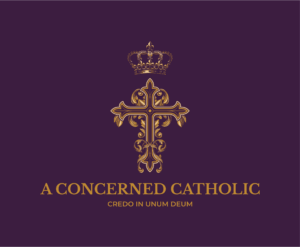
Acknowledgements:
While I have provided references to the sources of the information quoted or used by me above, I would like to acknowledge the YouTube channel of ‘The Catholic Esquire’ as instrumental in explaining the guile (modernism) used in the Vatican II documents (which I have gleaned and captured in context with Sacrosanctum Consilium in my letter).
